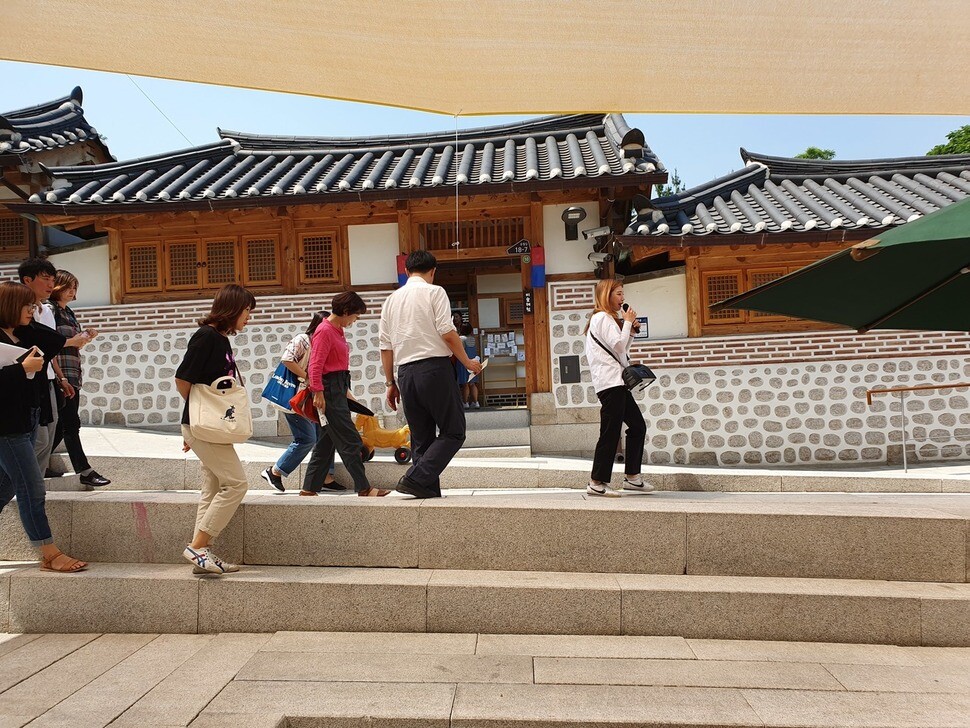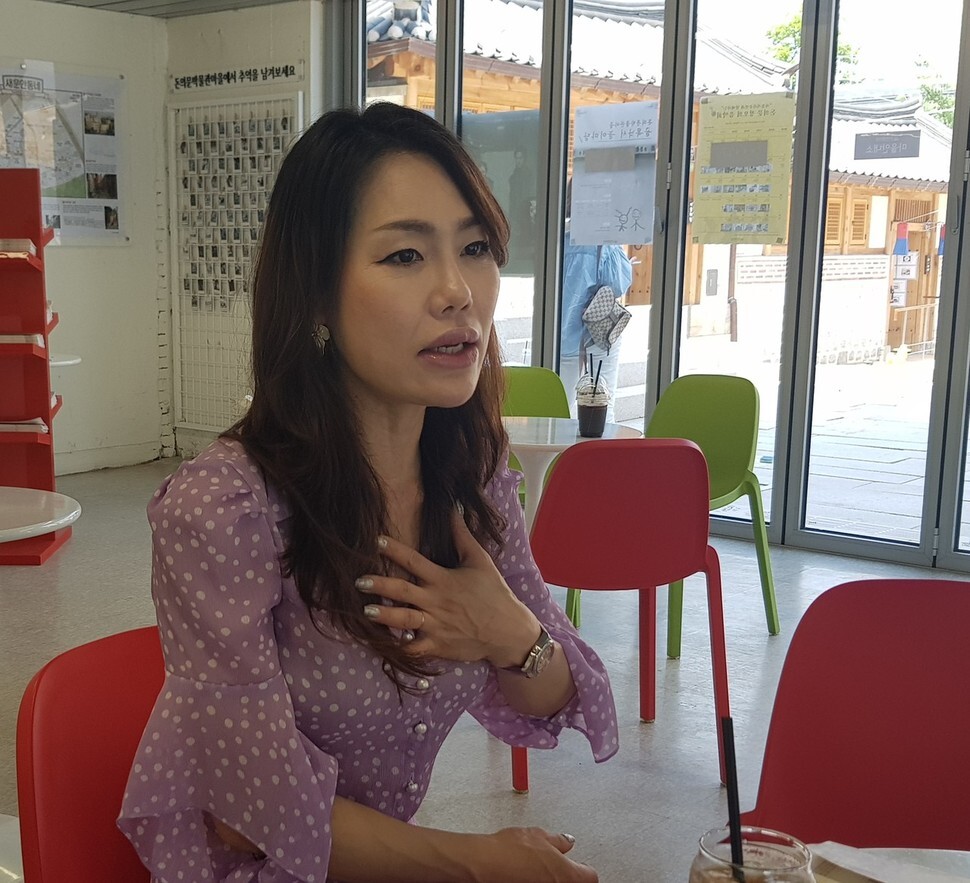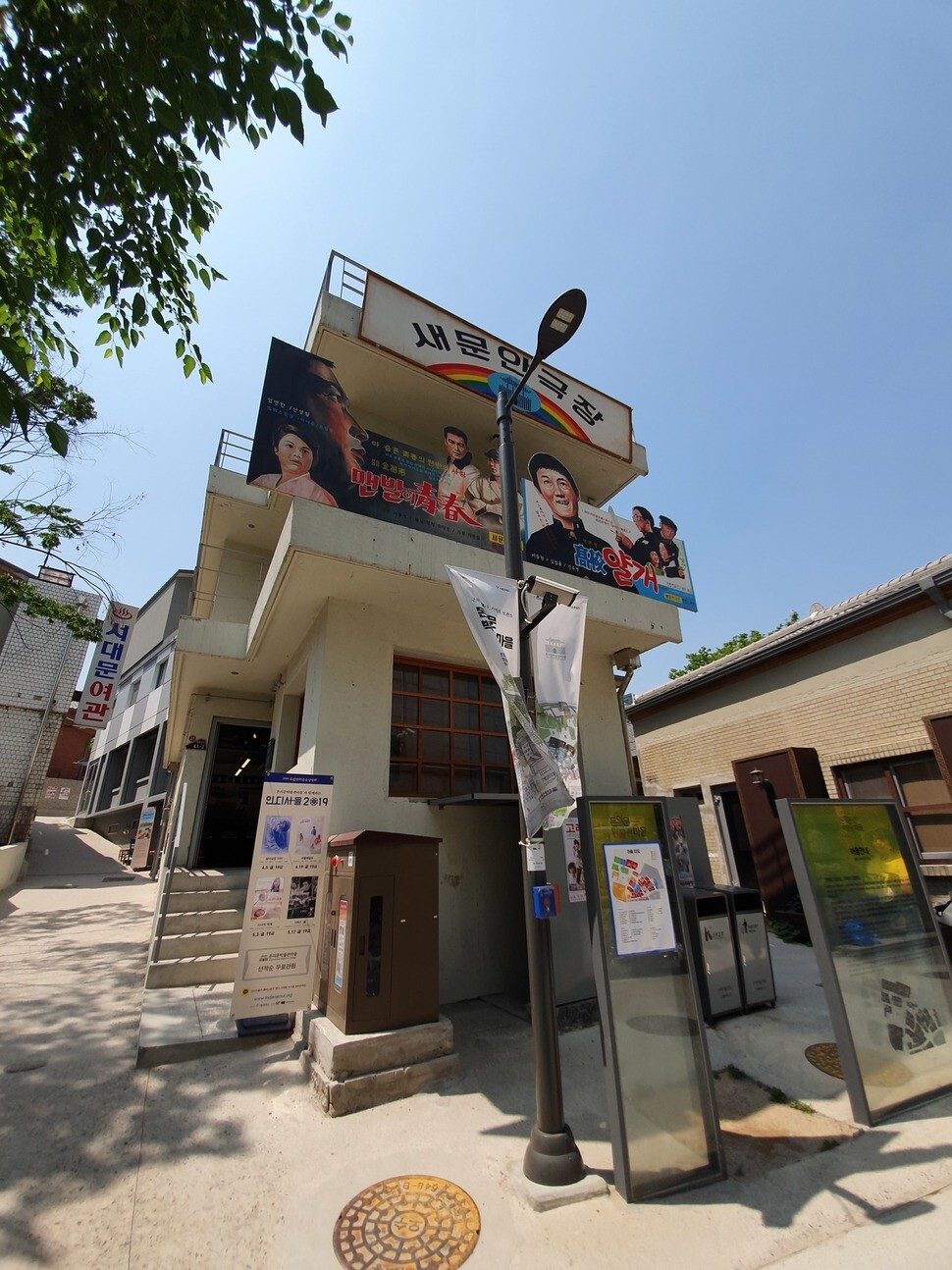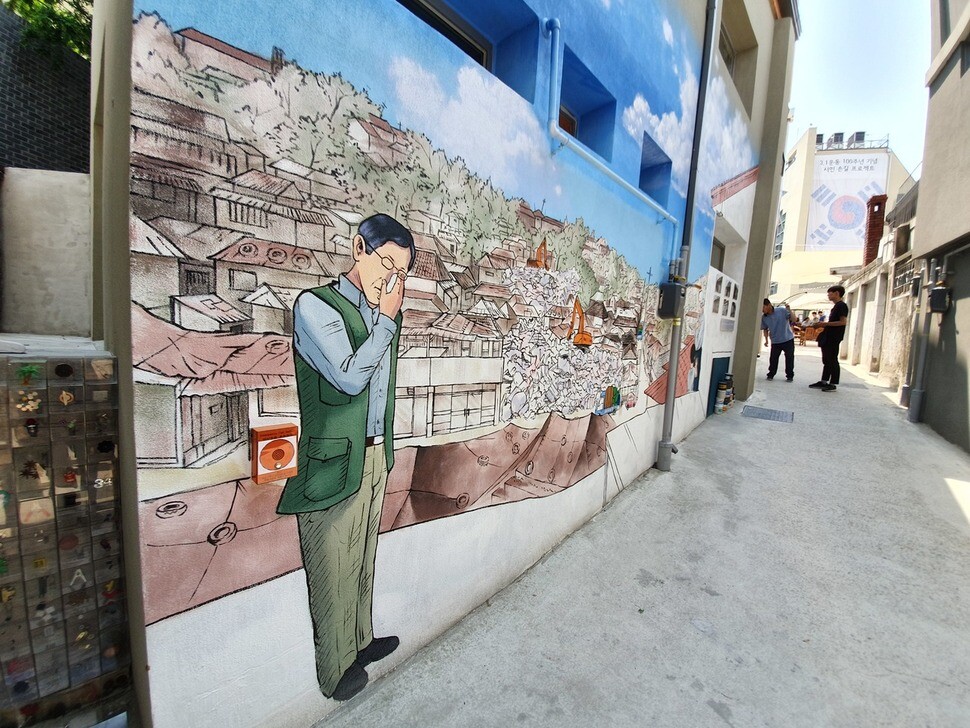hankyoreh
Links to other country sites 다른 나라 사이트 링크
[Reportage] Remember the past in a new and fun way

A house where French people lived under the Korean Empire in the early 20th century, the house of an independence movement activist under Japan’s colonial rule, an Italian restaurant in the 1950s, a movie theater from the 1960s and 1970s, and a barber shop in the 1980s — they’re all part of Donuimun Museum Village, which takes visitors on a journey through the past century of the history not only of Seoul but of Korea itself. The museum, formerly the site of Seoul’s Saemunan neighborhood, has been spotlighted as part of the recent interest in “newtro,” a play on “retro” that means putting a new twist on past trends.
The past of the neighborhood currently occupied by Donuimun Museum Village is fraught with forced demolition, ownership disputes, and a reputation for being a ghost town, but this past April, it was reborn as an open-air museum replete with cultural icons and nostalgia from Korea’s modern and contemporary periods. The attempt to pack so many memories from a 100-year period into a single space has led some to criticize the museum for having an ambiguous concept.
Such criticism doesn’t faze Mok Eun-jeong, a chair professor at the Seoul Arts Occupational Training College and the museum’s artistic director. “Actually, we have content that can appeal to visitors from a variety of age groups,” Mok said during an interview with the Hankyoreh on May 24. According to Mok, displaying the modern and contemporary periods side by side is designed to satisfy a wide range of visitors.

I paid a visit to Donuimun Museum Village, located near 27 Sinmun-ro 2-ga in Seoul’s Jongno District, on May 24. It was a hot and sunny day, but the museum was packed with visitors of all ages who were on a tour led by a docent named Min-ji. “Donuimun Museum Village gets about 1,000 visitors a day during the week and 3,000 visitors a day on the weekend. All age groups are represented, from little kids to elderly people in their eighties,” said an official from Seoul.
The reconstructed buildings in the museum complex cater to a range of themes. Donuimun Club depicts the Joseon Dynasty and the Korean Empire from the viewpoint of foreigners at the turn of the 20th century. The Saemunan Theater is a nostalgic trip back to the 1960s and 1970s. The theater contains film used to project some of the classic movies of the era, along with a room filled with arcade games such as Tetris and Space Invaders that are accessible to visitors. When I was there, a group of kids were engrossed in the games. The Seodaemun Photo Studio contains photography equipment that can replicate the turn-of-the-century mood of the Korean Empire and 1970s–1980s wedding shoots. This studio has been a big hit on Instagram and other social media sites, feeding into the “newtro” fad among people in their 20s and 30s.
“When children see exhibitions about the Joseon Dynasty and the Japanese colonial occupation, they can learn about history; when they see artifacts from the 1950s through the 1980s, they can experience what life was like for mom and dad. For people in their 20s and 30s, this is a place to enjoy the past anew as part of ‘newtro’ culture, and for middle-aged visitors, it’s a place to reminisce about the past. The majority of people who visit the museum say they’d like to come back. You ought to come once with your parents, once with your friends, and once with your children,” Mok said.

Separate spaces reserved for artists
There are also some spaces at Donuimun Museum Village that are reserved for artists. “There was pretty fierce competition among artists to move in here because there’s no rent and there’s ample support. In addition to being a good place to do artwork, ordinary people can come by to look at the artwork and to try their hand at woodwork and ceramics. It’s an ideal place both for artists and for the general public,” said Jeong Seon-ju, CEO of Naenaero, a visual art group that’s setting up at the Village Art Center.
“It’s hard to find places to exhibit hanji craft, and this is such a great exhibition space for craftspeople. It’s also becoming a community where hanji craftspeople can share stories about their work and how they make it,” said Cha Woo-su, chairman of a group for promoting the technological development of the hanji industry and the operator of a hanji workshop at the museum’s experiential education center. Hanji is traditional Korean paper made from the bark of the paper mulberry tree.

Saemunan neighborhood, where Donuimun Museum Village stands today, was designated for demolition along with the rest of Donuimun Zone 1 as part of a city renewal project in 2003. But in 2015, the city of Seoul altered its development plan in order to preserve the neighborhood in its original shape, in recognition of its historical value. By that point, however, the demolition was already underway. In 2016, one of the residents committed suicide by self-immolation after the Japanese restaurant he had run was torn down. To remember those events, the museum commissioned a mural that shows a resident mourning over the demolition.
“This museum was built on a neighborhood that suffered. We decided to have the mural drawn so that that suffering would be remembered. Moving forward, we’re planning to give the original residents first dibs in business opportunities at the museum. I want to bring back the people who left or forced out by the demolition,” Mok said.
The city of Seoul is recruiting people to operate various stores on the museum grounds, including a snack shop, an old-time general store, a book café or retro café, an old-fashioned “dabang” coffeehouse, an LP bar, and a traditional teahouse. Former residents and shop owners in the neighborhood will receive priority in the recruitment process.
By Chae Yoon-tae, staff reporter
Please direct comments or questions to [english@hani.co.kr]

Editorial・opinion
![[Editorial] Intensifying US-China rivalry means Seoul must address uncertainty with Beijing sooner than later [Editorial] Intensifying US-China rivalry means Seoul must address uncertainty with Beijing sooner than later](https://flexible.img.hani.co.kr/flexible/normal/500/300/imgdb/original/2024/0517/8117159322045222.jpg) [Editorial] Intensifying US-China rivalry means Seoul must address uncertainty with Beijing sooner than later
[Editorial] Intensifying US-China rivalry means Seoul must address uncertainty with Beijing sooner than later![[Column] When ‘fairness’ means hate and violence [Column] When ‘fairness’ means hate and violence](https://flexible.img.hani.co.kr/flexible/normal/500/300/imgdb/original/2024/0516/7417158465908824.jpg) [Column] When ‘fairness’ means hate and violence
[Column] When ‘fairness’ means hate and violence- [Editorial] Yoon must stop abusing authority to shield himself from investigation
- [Column] US troop withdrawal from Korea could be the Acheson Line all over
- [Column] How to win back readers who’ve turned to YouTube for news
- [Column] Welcome to the president’s pity party
- [Editorial] Korea must respond firmly to Japan’s attempt to usurp Line
- [Editorial] Transfers of prosecutors investigating Korea’s first lady send chilling message
- [Column] Will Seoul’s ties with Moscow really recover on their own?
- [Column] Samsung’s ‘lost decade’ and Lee Jae-yong’s mismatched chopsticks
Most viewed articles
- 1[Editorial] Transfers of prosecutors investigating Korea’s first lady send chilling message
- 2[Exclusive] Unearthed memo suggests Gwangju Uprising missing may have been cremated
- 3[Column] US troop withdrawal from Korea could be the Acheson Line all over
- 4Xi, Putin ‘oppose acts of military intimidation’ against N. Korea by US in joint statement
- 5[Column] When ‘fairness’ means hate and violence
- 6[Editorial] Intensifying US-China rivalry means Seoul must address uncertainty with Beijing sooner t
- 7‘Shot, stabbed, piled on a truck’: Mystery of missing dead at Gwangju Prison
- 8Spotlight turns to Hyundai Group Chairwoman’s visit to North Korea
- 9[Column] Samsung’s ‘lost decade’ and Lee Jae-yong’s mismatched chopsticks
- 10[Column] Will Seoul’s ties with Moscow really recover on their own?